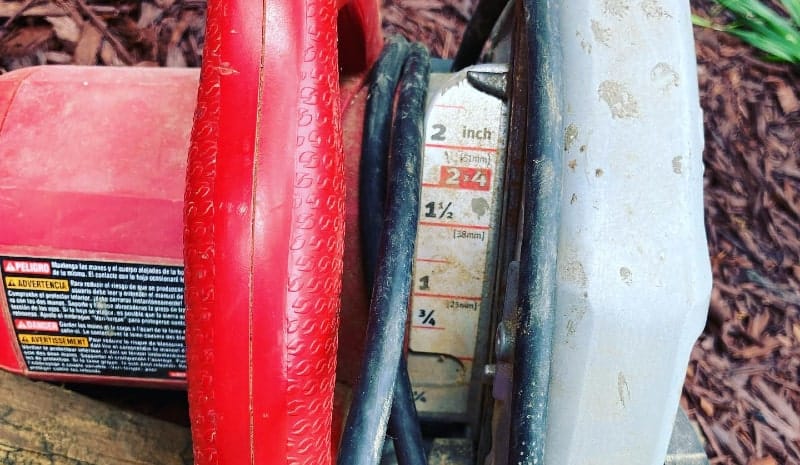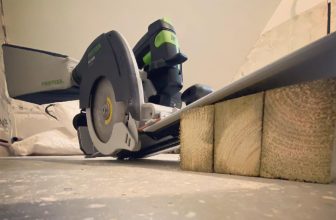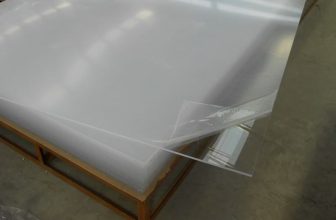How to Cut 45 Degree Angles With Circular Saw?
It is important to know how to cut 45 degree angles with circular saw because it is a necessary skill for a variety of projects. Knowing how to cut 45 degree angles will allow one to make a variety of cuts for a variety of projects. For example, a person might use this technique to cut a piece of wood. The 45 degree angle allows one to cut straight lines on both sides of the wood.
Contents
What Will it Take To Cut in 45 Degrees?
The angle of a beveled edge is determined by the difference between the angle of the cutting edge and the angle of the bevel. The cutting angle is the angle of the cutting edge relative to the bevel, and the bevel angle is the angle of the bevel relative to the blade. To cut 45 degree with circular saw, the cutting angle would be 45 degrees and the bevel angle would be any angle greater than 45 degrees, but less than 90 degrees.
3 Ways of Cutting 45 Degree Angles with Circular Saw: Step-by-Step Instruction
1 Way: Cutting a 45-degree Bevel
Step 1: Measure and Mark Cut Line
With a sharp pencil and a straightedge, measure and mark a line 45 degrees from the edge of the board and make a second line parallel to the first.
Step 2: Position and Clamp Speed Square
Clamp a speed square to the board at the edge of the first line, with the blade at the intersection of the two lines.
Step 3: Adjust the Saw’s Bevel and Depth
Set the saw blade for a 45-degree setting. Set the depth of the blade 1/4 inch into the wood.
Step 4: Make the Cut
With the speed square in place, make the cut by pushing the saw forward, keeping the saw blade even with the top of the blade.
Step 5: Sand the Edge
Sand the edge of the 45 degree cut with a sanding block.
2 Way: Cutting a 45-degree Miter
Step 1: Measure and Mark Cut Line
The first step is measuring and marking a cut line. Measure 2 inches from the end of the wood and mark the 45 degree angle.
Step 2: Position and Clamp Speed Square
The second step is positioning and clamping the speed square. This tool is typically made of metal and is used in conjunction with the saw blade to mark or cut a straight line. Position the speed square on the line and clamp it in place with a C-clamp or some other clamping tool.
Step 3: Set the Blade Depth
The third step is setting the blade depth. The blade depth should be set to the thickness of the wood minus the thickness of the saw blade.
Step 4: Make the Cut
The fourth step is making the cut. Once the blade depth is set, cut the wood following the 45 degree angle.
Step 5: Sand & File
The fifth and final step is sanding and filing the cut. Use a file to file down the cut until the line is flush with the wood. Use sand paper to sand the cut and make it smooth.
3 Way: Cutting a Compound Miter
Step 1: Measure and Mark Cut Line
Begin by measuring the length of the cut line and marking the distance on the wood.
Step 2: Position and Clamp Speed Square
Next, position the speed square on the wood and clamp it in place.
Step 3: Adjust Bevel Angle & Blade Depth
Adjust the bevel angle and blade depth until it matches the angle of the cut line.
Step 4: Make the Cut
Position the saw against the wood with the right side of the blade against the edge of the speed square and start the saw.
Step 5: Sand the Edge
After the cut is finished, sand the rough edge with a sandpaper of a different grit.
Tips for Accurate Cuts
Accurate cuts and measurements are important when you are taking on a new project. If you are measuring and cutting a piece of wood for a drawer and you cut the wood too short, you will not have enough wood to complete the project. If you are cutting a piece of fabric for a dress and you cut the fabric too small, you will not be able to make the dress without a lot of extra work. Here are some tips to help you measure and cut with accuracy.
- When measuring, make sure that you measure twice and cut once.
- Use a straight edge and a sharp blade to cut the material. For a straight edge, use a board with a line drawn parallel to the edge.
- Make sure to measure from the line down to the blade and then measure from the line up to the blade and choose the length that is the shortest. This will give you the most accurate cut.
- Next, clamp the straight edge down to the work surface to hold it in place. This will prevent the straight edge from moving around and give you a more accurate cut.
- When you are cutting, make sure that the blade is at a 90 degree angle to the material.
- The blade should be perpendicular to the material you are cutting.
- If the blade is not at a 90 degree angle, you will either not cut through the material or you will cut through the material in a diagonal direction.
- If you are using a rotary cutter, make sure to follow the instructions for the rotary cutter. The instructions will tell you what the blade should be at the correct angle for the material.
FAQ
How to measure for 45 degree cuts?
Use a protractor, circular saw, and a square. The protractor is used to measure the degree of angle. The square is necessary to show the correct starting point for the saw. The saw can be used to make the cut.
How to measure 45 degree angle on wood?
Choose to be on one side, and measure on the other. Make sure that the measure is true, and that the square is at the same starting point.
How to make perfect 45 degree cuts?
Use the square to measure the desired angle. Pick a point on the board, such as the corner of the board, and then mark the degree that is desired. Use the saw to cut along the line.
Also read:
Conclusion
When you are cutting material for a project, first measure the length and width of the material and make sure it is accurate before you cut. Cut the material straight, so that the blade is perpendicular to the material. Use a straight edge to ensure accuracy. If you are using a rotary cutter, follow the rotary cutter instructions to make sure that the blade is at the correct angle. These tips will help you make accurate cuts, which will make your project easier. Now you know how to make a 45 degree cut with circular saw.
“A good tool stays with you for many years and choosing carefully ensures the job is done right, your work is neat, and the tool is always a pleasure to use”









